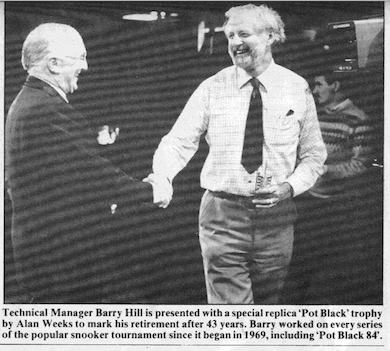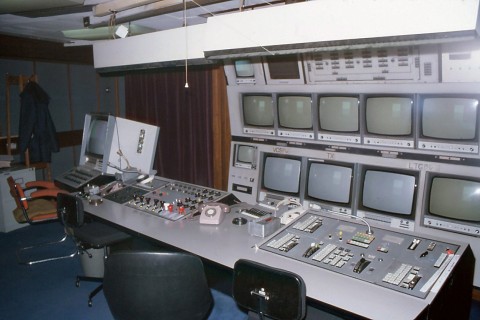As part of my training in 1979, I was attached to the technical team of a couple of productions including a drama, a BBC Schools’ production of The Long, the Short and the Tall recorded over 3 days at Pebble Mill. The producer/director was Ron Smedley. Key acting cast is listed at https://www2.bfi.org.uk/films-tv-people/4ce2b73aef97d. The episodes were subsequently transmitted as a single play. More details at IMDB https://www.imdb.com/title/tt13411812/?ref_=adv_li_tt. I can recall the lighting director was Barry Hill, the technical manger was Ron Irvine, the sound supervisor was Alastair Askham, and the vision mixer was Mark Kershaw.
The production was divided into 3 half-hour transmissions, each episode was allocated one studio day and recorded “live to tape” multiple times. Ron Smedley wanted the uninterrupted action from the stage play to be available in this TV production, enabling the actors to react better to the rapid dialogue segments. The production used a single set that occupied most of the floor area in Studio A, including a jungle setting at the rear of the hut. One shot in the programme needed a wide shot of that jungle and the entrance to the hut, but the camera shot would have included a lot of the lighting rig, so a glass shot was created to hide this unwanted area.
by Andy Woodhouse
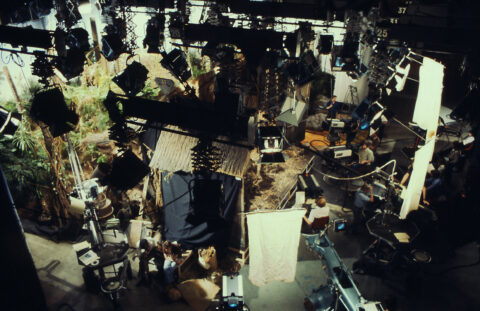
Hut interior (right) and jungle (left). Floor at edge of hut is quite crowded with technical kit. Photo by Andy Woodhouse, no reproduction without permission
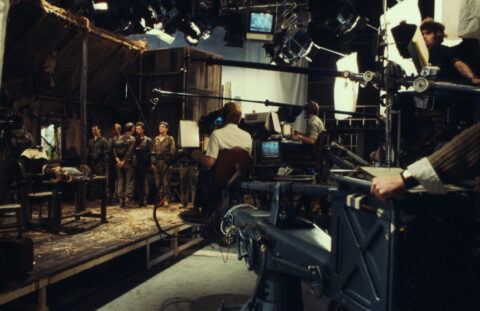
Multiple sound booms and camera cranes in use. Photo by Andy Woodhouse, no reproduction without permission.
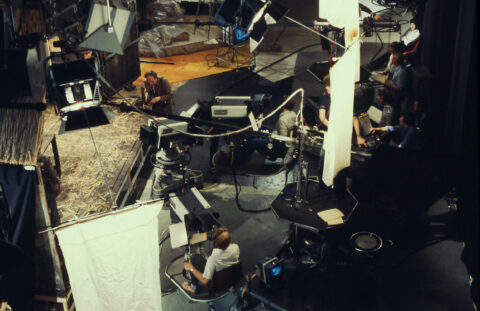
Close positioning of the cameras and sound booms on the floor. Photo by Andy Woodhouse, no reproduction without permission.
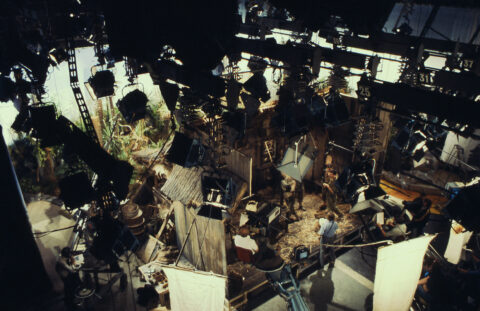
Shows size of jungle area, and use of bounced light for the hut interior. Photo by Andy Woodhouse, no reproduction without permission.
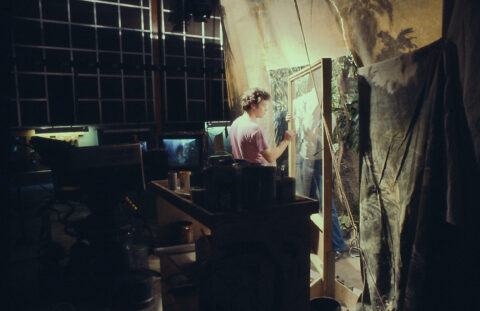
Shows the camera at the left side, with the artist, Steve Mitchell, painting onto the glass to add the scenery extensions. The artists monitor showing the composited image is just to the left of centre. Photo by Andy Woodhouse, no reproduction without permission.
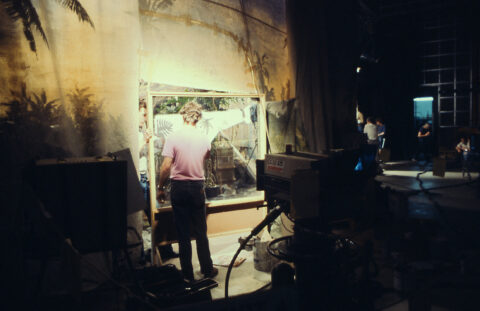
Cutout in the scene cloth, the glass in the frame, and the two artists at work. Photo by Andy Woodhouse, no reproduction without permission.
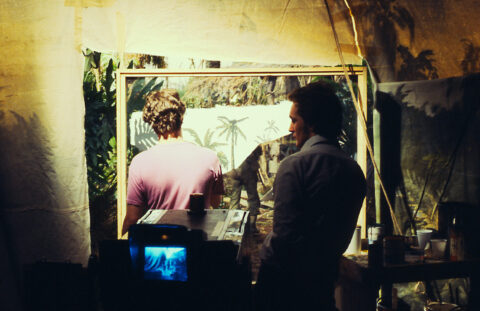
Detail of the painted glass. Photo by Andy Woodhouse, no reproduction without permission.
Lesley Weaver left the following comment on the Pebble Mill Facebook page:
